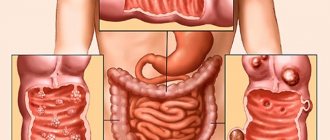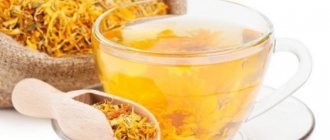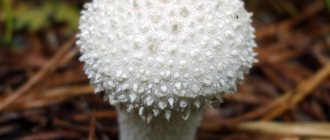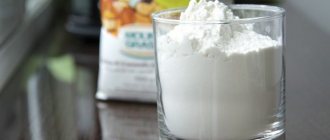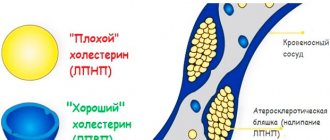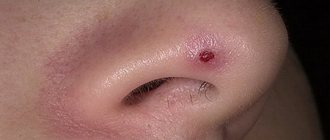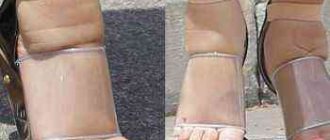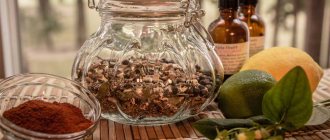Hydrosalpinx: traditional treatment with juice therapy
The female body, exhausted by the disease, will be helped to support and restore fresh juices of medicinal plants.
- Potato juice. After removing the peel from the tubers, grate them or grind them in a blender. Squeeze 1 glass of juice from the resulting mass. This volume is divided into 3 equal parts and drunk three times a day.
- Stinging nettle. Young leaves and shoots of the plant are washed and dried well, passed through a meat grinder with a fine mesh. Then the juice is squeezed out of the resulting mass through gauze folded in several layers. The resulting juice must be diluted with water in a 1:1 ratio. You need to drink 120 ml in the evening after meals before going to bed.
Potatoes can be replaced with pumpkin or carrots. It is recommended to add 1 tsp to the resulting juice. l. honey or a small handful of fresh (frozen) cranberries. Each of these juices can be combined at your discretion.
Treatment of hydrosalpinx using alternative medicine methods
First of all, it is worth mentioning that treatment can be quite lengthy. However, having chosen traditional medicine recipes as a priority, you must definitely visit a doctor, remembering that in the case of an incorrectly selected set of measures, the sad result can be removal of the fallopian tubes and infertility.
Juice therapy
A body exhausted by illness needs help. Freshly squeezed juices are suitable as support.
- The stems of young nettles along with the leaves need to be washed, dried with a towel and passed through a meat grinder, turning into a paste. Then squeeze through a large piece of clean gauze, folded in 5-6 layers, dilute the resulting juice with boiled water one to one and take ½ glass on an empty stomach and after meals before bed.
Hydrosalpinx treatment with leeches
If you have already given birth, there are no clinical manifestations or exacerbations, then you can use leeches. Treatment of hydrosalpinx with leeches is very effective. This treatment method is not included in the standard treatment of inflammatory diseases of the uterine appendages. Used as rehabilitation. If leeches are used for hydrosalpinx, the hirudin secreted by them has a beneficial effect on adhesions.
Get a free doctor's consultation
Consequences of hydrosalpinx that doctors are silent about
By clicking on the button, you consent to the processing of your personal data
Symptoms and diagnosis
In case of chronic pathology of the fallopian tubes with the formation of hydrosalpinx, there are no symptoms clearly indicating its presence. But a number of patients who are randomly diagnosed with such a problem during an ultrasound note periodic pain in the lower abdomen, which intensifies during menstruation. But this same symptom, with varying degrees of severity, is present in many other diseases of the pelvic organs. A clear sign of hydrosalpinx is the appearance of serous discharge that flows through the vagina during compression emptying of the pathological cavity.
Suspicion of obstruction of the fallopian tubes with the development of hydrosalpinx causes prolonged infertility. The exclusion strategy allows us to confirm or refute the diagnosis using ultrasound and/or MSG and/or laparoscopy.
Acute hydrosalpinx also does not have clear symptoms, but is often accompanied by:
- pain from organ damage;
- low-grade fever;
- increased heart rate;
- weakness.
Of all these symptoms, the one that indicates their true cause is, first of all, pain in the area of the tubes. Prescribing an ultrasound is normal practice in such cases. This is the most comfortable method of examination for patients, however, it does not provide 100% information in cases where the pipes are not filled with liquid, or they are draining cavities or have a slightly expanded lumen. In this case, transvaginal ultrasound using contrast or metrosalpingography, an x-ray method using contrast, is considered more informative. But methods associated with performing manipulations inside organs carry a risk of infection and injury, which can cause complications such as hydrosalpinx. However, both methods still contain a diagnostic error and cannot reliably establish the presence of pathology in 100% of cases.
Video on the topic
The most complete picture of the condition of the fallopian tubes and other pelvic organs is provided by the laparoscopic method of examination. Already at the diagnostic stage, this method allows you to perform the necessary corrective manipulations. The laparoscope is inserted through a narrow incision (puncture) and allows the doctor to visually assess the condition of the organs. Due to the lack of technical facilities for performing laparoscopy, not all clinics can afford such mini-operations. But there is no comparable alternative to this method in terms of information content for poorly identified hydrosalpinxes.
The patency of the fallopian tubes can be checked using fluoroscopy using a radiopaque substance inserted into the uterus through the vagina.
Traditional treatment of hydrosalpinx with baths
The usual bath time is 30 minutes at an optimal temperature of 39C-45C. To perform this procedure, the bathtub is filled halfway.
- Clay bath. Prepare a liquid clay solution in a container (7-8 tablespoons of clay per 1 liter of warm water). Then alternately lower your hands into it for 15-20 minutes, and then your feet. To prevent the clay from hardening, it should be covered with film. This procedure is performed 3-4 times a day with an interval of 5 days.
- Juniper bath. Berries (50g) and stems (50g) of a dry plant are poured into 1 liter. boiling water and infuse for 2-3 hours. Then everything is filtered and poured into the prepared bath. The procedure is performed daily for 5 days (preferably before bedtime).
These ingredients can be replaced with cabbage leaves boiled in milk, black radish, walnut leaves or fresh forest hay. This procedure effectively relieves pain and inflammation.
Hydrosalpinx
A small-sized hydrosalpinx with an inactive inflammatory process, as a rule, does not manifest itself in any way and is discovered by chance during a routine ultrasound of the pelvic organs. With significant accumulation of fluid and overstretching of the tube, a feeling of heaviness in the lower lateral parts of the abdomen and chronic pelvic pain appear. Body temperature may periodically rise to subfebrile levels. With draining hydrosalpinx, patients notice periodic discharge of copious, watery leucorrhoea from the genital tract.
In the case of acute inflammation, there is a rise in temperature to 38º-39ºC, intense bursting or throbbing pain radiating to the groin. Sometimes the clinical picture of hydrosalpinx resembles acute surgical pathology (appendicitis), intestinal or renal colic. Severe malaise, hectic fever, chills, myalgia, as a rule, indicate the development of pyosalpinx.
Impaired patency of the fallopian tubes due to hydrosalpinx directly affects reproductive function. If the lumen of the tube closes completely, this makes it impossible for the egg to enter it and fertilize - so-called tubal infertility develops. Therefore, often the reason for examination by a gynecologist is precisely a woman’s unsuccessful attempts to become pregnant. However, even if the lumen does not close completely, damage to the ciliated epithelium, smoothness of the folds of the mucous membrane and atrophy of muscle fibers cause disruption of tube peristalsis and, as a consequence, the development of ectopic pregnancy. Hydrosalpinx not only prevents pregnancy from occurring naturally, but also reduces the effectiveness of in vitro fertilization several times. The presence of hydrosalpinx supports the course of chronic endometritis, which also affects the success of ART methods.
A serious complication of hydrosalpinx can be a rupture of the fallopian tube, which is indicated by sudden sharp pain in the corresponding half of the abdomen, tachycardia, arterial hypotension, pale skin, and cold sweat. In case of rupture of the pyosalpinx, there is a high probability of developing peritonitis, pelvioperitonitis, and abscess of the pouch of Douglas. In some cases, the breakthrough of pus does not occur in the abdominal cavity, but in the bladder, vagina or rectum.
Hydrosalpinx and IVF
Research in the field of reproductology convincingly proves the negative impact of hydrosalpinx on the prognosis of IVF. At the same time, not only do the chances of successful embryo transfer decrease significantly, but the risks of developing ectopic pregnancy and spontaneous abortion in the early stages also increase. This cause-and-effect relationship is explained by a number of pathological effects that the contents of hydrosalpinx can cause:
- Mechanical action
. It is assumed that the draining hydrosalpinx, emptying into the uterine cavity, can “wash out” early embryos. - Embryotoxic effect
. In addition to the direct mechanical removal of embryos from the uterine cavity, the contents of the hydrosalpinx have a destructive effect on them. Liquid from hydrosalpinx contains large quantities of microorganisms and their toxins, lymphocytes, prostaglandins, proinflammatory cytokines, etc., which have a pronounced cytotoxic and embryotoxic effect. This effect persists even with a 50% dilution of the hydrosalpinx contents. - Endometrial damage
. Using morphological and immunohistochemical methods, pathomorphological changes in the endometrium under the conditions of the existence of hydroalpinx were identified. A decrease in local immunity, the expression of receptors for progesterone and estradiol, a decrease in subendometrial blood flow, structural disorders of the glandular and stromal components of the endometrium - any of these factors can cause a violation of embryo implantation.
Douching
To relieve the manifestations of the disease, douching with decoctions of medicinal plants is used. For their preparation the following are used:
- pharmaceutical camomile;
- Oak bark;
- salvia;
- mallow;
- cinquefoil root;
- St. John's wort;
- sage.
Pour hot water over 2 tablespoons of any plant, leave, strain. To perform douching, the infusion is warmed to room temperature and poured into the syringe. Plants can be combined with each other. The procedure is performed in the morning and before bed, the course lasts no more than 30 days.
In addition to douching, these prepared solutions can be used to soak tampons. They are made from sterile material and placed in the vagina.
Traditional treatment of hydrosalpinx with infusion and tea
Folk remedies show good results in the treatment of hydrosalpinx. Alcohol tinctures, infusions and teas are convenient for every woman to take.
- Tincture from boron uterus: 1 tbsp. l. plants are filled with 1/3 tbsp. l. cooled boiled water, stir. The tincture is taken twice a day, 1 tbsp. l.
- Acacia tincture. Place 20g of flowers and 2 tbsp in a dark glass container. l. plant bark, filled with water so that it just covers the acacia. Infuses for 10 days. The infusion is taken 25 drops 30 minutes before meals.
- Oat tea. Rinse well 4 tbsp. l. oats, pour boiling water and leave for 10 hours, tightly wrapping the container. Then strain and add 2 tbsp. l. honey Drink 150 ml. for 1 appointment.
- Cinquefoil infusion. Potentilla root infused with alcohol is taken for 2-3 months, 50 drops diluted in 100 ml. water.
In preparing tea and infusions you can use sweet clover, chamomile, centaury, adonis, plantain seeds, and viburnum.
What herbs to drink for hydrosalpinx?
- Brew 5 grams of dried adonis herb and the same amount of crushed Adam's root in a glass of boiling water and leave covered for about two hours. The infusion, passed through a fine strainer, should be taken in small portions throughout the day.
- In parallel with the course of aloe pulp, it is recommended to drink a decoction of plantain seeds. To obtain it, pour two dessert spoons of seeds with half a liter of boiling water and place on the stove. Boil the mixture over medium heat for 7-9 minutes and cool. Take 1/3 cup three to four times a day for a course of eight weeks.
- Steam a dessert spoon of dry Adam's root herb with 200 ml of boiling water and leave. Strain the brewed infusion and drink in small sips throughout the day.
- Treatment of hydrosalpinx with boron uterus. The boron uterus is also quite effective for hydrosalpinx; reviews from women clearly emphasize its beneficial effect on the woman’s body
Borovaya uterus for hydrosalpinx: one tablespoon mixed with 30 milliliters of boiled cooled water. You need to drink 1 dessert spoon with each meal. The duration of the course is 30 days, after which there is a break for one and a half weeks, then repeat.
Folk remedies for hydrosalpinx help to significantly alleviate a woman’s condition, the course of the disease, and complement traditional drug treatment.
Treatment options
If you are wondering whether hydrosalpinx can be cured, rest assured that it is not that difficult. However, in some cases this may take quite a long time – several years.
Quite often the method of treating hydrosalpinx with antibiotics is used. It is based on the use of local and systemic medications, which are often used in conjunction with homeopathy, physiotherapy, and grandmother’s recipes.
The conservative method demonstrates high efficiency in detecting partial adhesion of villi. It is based on anti-inflammatory and antibacterial therapy. Treatment of hydrosalpinx without surgery is possible, but only in simple cases, without complications. At the same time, you should be prepared that you will achieve a positive result only by strictly adhering to the recommendations of your doctor. When choosing a specific antibacterial drug, preference should be given to those drugs that have a broad antimicrobial effect against various types of pathogenic strains.
So, to eliminate adhesions, Longidase is used for hydrosalpinx. This drug has a resolving, decongestant, antioxidant and regenerating effect. It improves the elasticity and permeability of tissues. Under the influence of the drug, proteins are broken down, which prevents scarring in the fallopian tube.
To treat hydrosalpinx without surgery, this drug is used in the form of tablets or suppositories (rectally or vaginally).

